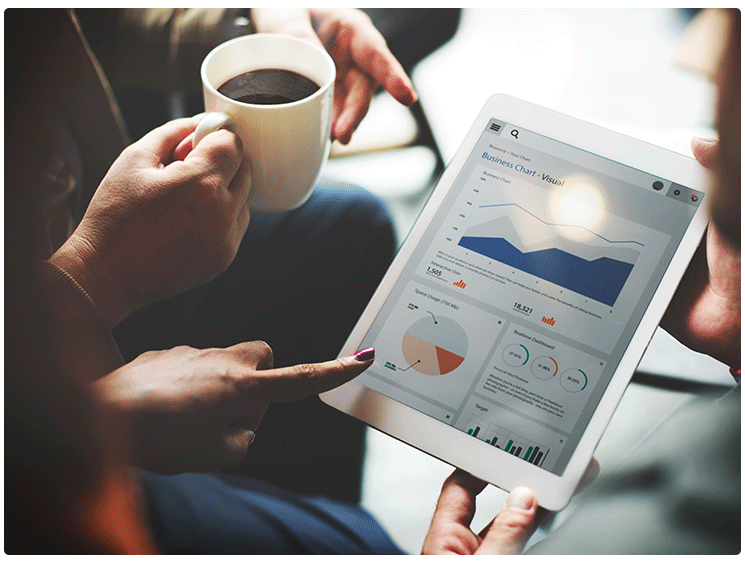Setting Up Your Sales Pipeline
Understanding Sales Cycle

The sales cycle is a set of predefined stages or steps that are followed in the execution of a deal. In other words, the sales cycle gives your reps a thorough roadmap that they will use to close a new customer. Building the right sales cycle will reduce the time it takes to close deals and enhance the customer’s buying experience. Most sales cycles are unique but we have listed the common stages below :
- Lead Database
- Buyer’s Persona
- Sales Prospecting
- Lead Score
- Lead Qualifications
- Sales Performance
Define Your Buyer’s Persona
The buyer’s persona can be defined as a semi-fictional representation of your real and potential customers, which you create based upon your research in order to represent the different user types that might use your product in a similar way. The buyer’s persona uncovers your customer’s goals, motivations, behaviors, values, and pain points. When you fully understand your buyer’s personas, it helps you plan a marketing strategy that answers your real customer’s questions.
Remember, when creating a prospecting process, a critical initial step is developing a buyer’s persona. Defining your buyer’s persona helps you to focus on both—the decision maker’s factual variables and the decision maker’s personality variables that impact the prospecting process. You should never ignore the personal aspect of the selling process, people buy from people they are comfortable with and like. Hence, the more you are in tune with the prospect’s personality using a persona, the more likely you are to make the sale.
Define Your Sales Prospecting
Sales prospecting is the first step in the sales process, which consists of searching for prospective customers or clients from your pool of leads, with the goal of identifying potential buyers that can move through your sales funnel and eventually convert into revenue-generating customers.

For effective prospecting, finding prospects who truly need your product or service to solve their challenges and pain points is extremely important. Remember, prospects are customers-in-the-making whether they buy today or a year from now, sales success begins with effective prospecting. Hence the goal of sales prospecting is to develop a database of prospects and then communicate with them in the hopes of converting them from potential customers to paying customers.
Compared to lead generation, sales prospecting activities tend to be warmer as they are directed towards converting your existing leads into paying customers. Tibor Shanto says “Master prospecting and you will be the master of your sales destiny." So you should consider prospecting as the prerequisite to all the other activities that you need to do to complete a sale.
Sales jargon can confuse the best of us, especially when you consider the terms lead and prospect which can often be used interchangeably. You can simply remember this: A sales prospect is a qualified lead.

The above visual illustrates that leads come first, sales prospect second. While a lead is less likely to convert than a sales prospect, once that lead makes it through qualification during your sales process, they can then become a sales prospect. But your goals with both leads and prospects are the same, nurturing them until they buy your product.
Prospect Vs. Persona
|
Category |
Buyer/Customer Profile |
Buyer's Persona |
|---|---|---|
|
Focus |
The buyer's profile focuses on the prospect's business, company, and industry. |
The buyer’s persona is a personal representation of the prospect. A buyer persona is used to list the customer's characteristics (Job role, experience, motivation, goals, etc). |
|
Purposes |
Identify companies are a good fit for your business Determine the decision-makers within these companies. |
Profoundly understand your decision-makers Build valuable communication with them. |
|
Who You Can Help |
A buyer profile enables you to identify which companies you can or cannot help. Example: Juice & Drinks Manufacturing in New York. |
A buyer persona is a fictional representation of the customer that you'd like to help. Example: 'CEO Greg' who loosely represents many real CEOs of small companies that you're looking to target. |
|
Description |
A buyer profile is a more precise description (likely a company that you would like to do business with) which includes company size, industry, budget, etc... |
A buyer persona would be based on your best fit demographic (Position, Age, Income...) that you would center your product or service around. |
|
Data Fillers |
Company size Number of employees Budget Industry Geography Demographics Special requirements |
Job Role Title Experience Goals Challenges Motivation Buying Behavior |
|
Example |
An example of a buyer's profile can be a Midwestern firm that specializes in heavy metals and has two thousand workers. It can be a lot more specific than that but creating a buyer profile becomes more precise than a buyer persona. |

Tags


How We Doing Here